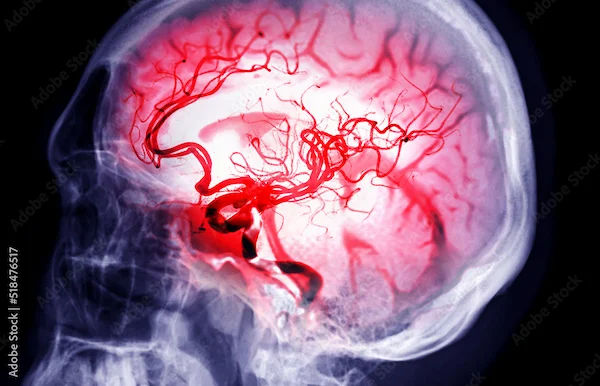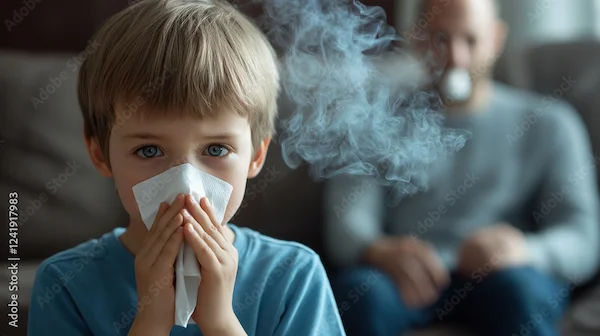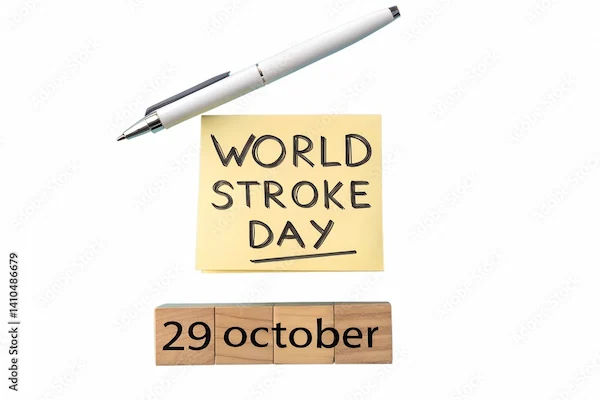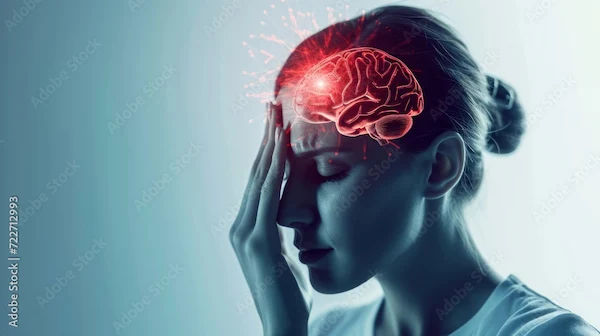Stroke Types, Effects, and Recovery
A stroke is a life-changing medical event which can have big impacts on the brain and body. It happens when blood flow to part of the brain is interrupted, leading to a sudden loss of brain function. While strokes are a leading cause of disability worldwide, early recognition, appropriate treatment, and ongoing recovery strategies can help individuals regain independence and quality of life.

Written by Dr.Sonia Bhatt
Last updated on 3rd Jul, 2025
.webp?tr=q-80,f-webp,w-350,dpr-2,c-at_max 700w)
What is a Stroke?
When the blood supply to the brain is interrupted or reduced, Stroke occurs. It causes brain cells to be deprived of oxygen and nutrients. Brain tissue begins to die within minutes, leading to long-term neurological damage if not treated promptly. The consequence of a stroke depends on which part of the brain is affected and how much of the brain tissue is damaged.
There are three main types of strokes, each with different causes and outcomes: Ischaemic Stroke, Haemorrhagic Stroke, and Transient Ischaemic Attack (TIA). Let’s dive into each type and understand how they affect the brain.
1. Ischaemic Stroke: The Most Common Type
Ischaemic stroke accounts for approximately 85% of all strokes. It occurs when a blood clot blocks or narrows an artery supplying blood to the brain. The blockage reduces blood flow and oxygen to the affected brain area, damaging brain cells.
Causes of Ischaemic Stroke:
- Atherosclerosis: The narrowing of arteries due to the buildup of fatty deposits.
- Embolism: A blood clot or other debris that travels from another part of the body (often the heart) to the brain.
- Thrombosis: The formation of a blood clot in one of the brain's arteries.
2. Haemorrhagic Stroke: Bleeding in the Brain
A haemorrhagic stroke occurs when a blood vessel in the brain bursts, leading to bleeding (haemorrhage) within the brain tissue. This bleeding puts pressure on the brain and damages brain cells. Haemorrhagic strokes are less common but tend to be more severe and have a higher fatality rate than ischaemic strokes.
Causes of Haemorrhagic Stroke:
- Aneurysms: Weakness in the blood vessel wall that causes it to bulge and eventually rupture.
- Arteriovenous Malformations (AVMs): Abnormal tangles of blood vessels that can rupture.
- Hypertension: High blood pressure can weaken blood vessel walls, leading to rupture.
3. Transient Ischaemic Attack (TIA): A Warning Stroke
A transient ischemic attack (TIA), also known as a "mini-stroke," occurs when there is a temporary blockage in the blood vessels supplying the brain. The symptoms of a TIA are similar to those of a stroke but typically last only a few minutes to hours and resolve within 24 hours. Although the effects of a TIA are short-lived, it is a serious warning sign that a person is at higher risk of having a full-blown stroke in the future.
Causes of TIA:
- Similar to those of an ischaemic stroke, including blood clots, atherosclerosis, and heart problems.
Effects of Stroke
The effects of a stroke can vary from one individual to another. The effects depend on the type of stroke and the location and area of the brain affected by stroke. Stroke can affect physical, mental, and emotional well-being, many times leading to temporary or permanent disability.
Physical Effects
A stroke can induce a wide range of physical effects, which can vary in severity:
- Paralysis or Weakness: One of the most common effects, often on one side of the body (hemiplegia or hemiparesis). This can affect the arm, leg, face, or any combination.
- Loss of Coordination: Difficulty with balance and coordination (ataxia) can make walking and daily activities challenging.
- Speech and Swallowing Difficulties: Many stroke survivors experience aphasia (difficulty speaking or understanding speech) or dysphagia (difficulty swallowing).
- Vision Problems: Strokes can affect vision, leading to blindness in one or both eyes or difficulty seeing on one side of the visual field (hemianopia).
Cognitive Effects
Strokes can profoundly impact cognitive functions, affecting memory, thinking, and reasoning. Common cognitive issues include:
- Memory Loss: Difficulty remembering things, especially short-term memory, is common after a stroke.
- Confusion or Difficulty Concentrating: Stroke survivors may have trouble focusing on tasks or understanding complex information.
- Executive Dysfunction: includes difficulty with planning, making decisions, and problem-solving.
Emotional and Behavioural Effects
In addition to physical and cognitive effects, stroke survivors may also experience emotional and behavioural changes. These can include:
- Depression and Anxiety: Feelings of sadness, hopelessness, or worry are common after a stroke.
- Personality Changes: Some individuals may experience changes in their personality, mood swings, or increased irritability.
- Emotional Lability: This refers to uncontrollable crying or laughing, which may not be appropriate for the situation.
Stroke Recovery: The Road to Healing
The recovery process after a stroke is often long and challenging, but with the proper care and support, many stroke survivors can regain significant function and independence. Stroke recovery is highly individual and depends on the type of stroke, the extent of brain damage, and the person's overall health. Recovery typically occurs in phases, starting immediately after the stroke and continuing for months or even years.
1. Acute Phase (First 24-48 Hours)
The acute phase of stroke recovery focuses on stabilising the patient’s condition and preventing further damage. This phase may involve:
- Emergency Treatment: In the case of an ischaemic stroke, clot-busting medications (such as tissue plasminogen activator or tPA) may be administered to restore blood flow.
- Surgical Intervention: In cases of haemorrhagic stroke, surgery may be needed to repair blood vessel damage or remove excess blood.
During this phase, patients are closely monitored in a hospital setting, and rehabilitation efforts are often initiated as soon as they are stable.
2. Rehabilitation Phase (Weeks to Months After Stroke)
Rehabilitation focuses on helping the patient regain as much function as possible and adapt to permanent disabilities. Key elements of rehabilitation include:
- Physical Therapy (PT): Exercises and treatments to improve strength, balance, and coordination.
- Occupational Therapy (OT): Helps patients regain skills needed for daily activities, such as dressing, cooking, and bathing.
- Speech and Language Therapy (SLT): Focuses on improving communication and swallowing abilities.
3. Long-Term Recovery and Management (Months to Years)
Long-term recovery may involve continued therapy, lifestyle adjustments, and the management of risk factors to prevent a second stroke. Stroke survivors may continue to experience improvements over time, but some disabilities may be permanent. During this phase, ongoing support is crucial, including:
- Mental Health Support: Addressing depression, anxiety, and other emotional challenges.
- Lifestyle Changes: Adopting a healthier lifestyle, including regular physical activity, a balanced diet, smoking cessation, and controlling blood pressure, cholesterol, and diabetes.
- Support Groups: Connecting with other stroke survivors for emotional support and advice.
Actionable Advice for Stroke Survivors
While recovery from a stroke can be a challenging and ongoing process, several strategies can aid in recovery and improve overall well-being:
- Follow your rehabilitation plan: Consistent participation in therapy sessions is key to maximising recovery.
- Stay active: Regular physical activity can improve strength, mobility, and cardiovascular health, which is essential for stroke recovery.
- Maintain a healthy diet: A diet rich in fruits, vegetables, whole grains, lean proteins, and healthy fats can help support brain health and reduce stroke risk factors.
- Manage risk factors: You can control high blood pressure, diabetes, and cholesterol through medication, lifestyle changes, and regular check-ups with your healthcare provider.
- Seek support: Reach out to family, friends, or stroke support groups for emotional and practical support.
Conclusion
A stroke can be a life-altering event, but with early intervention and the proper care, many individuals can regain function and lead fulfilling lives. By understanding the different types of strokes, their effects, and the recovery process, stroke survivors and their families can make informed decisions about their care and well-being. Remember, recovery is a gradual journey, but progress is always possible with determination, support, and the right resources.
Consult Top Neurologists
Consult Top Neurologists

Dr. Aditendraditya Singh Bhati
Neurosurgeon
18 Years • MBBS(2004), DNB Neurosurgery(2014); MNAMS; Fellow Neuroendoscopy
Delhi
Apollo Hospitals Indraprastha, Delhi
(100+ Patients)

Dr. Sarthak Mehta
Neurologist
6 Years • MBBS , MS Mch ( Neuro )
Bengaluru
Apollo Clinic, JP nagar, Bengaluru
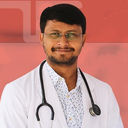
Dr. Ganeshgouda Majigoudra
Neurologist
10 Years • MBBS, MD ( GENERAL MEDICINE) DM (NEUROLOGY)
Bengaluru
Apollo Clinic, JP nagar, Bengaluru
Dr. Annakula Ramu
Neurologist
7 Years • MBBS, MD General Medicine, DM Neurology
Jagtial
Sairam Neuro and Children Hospital, Jagtial

Dr Rajashekar Mummadi
Neurologist
3 Years • MBBS, DNB General Medicine, DRNB Neurology
Hyderabad
Dr Ram's Neuro Clinic, Hyderabad
